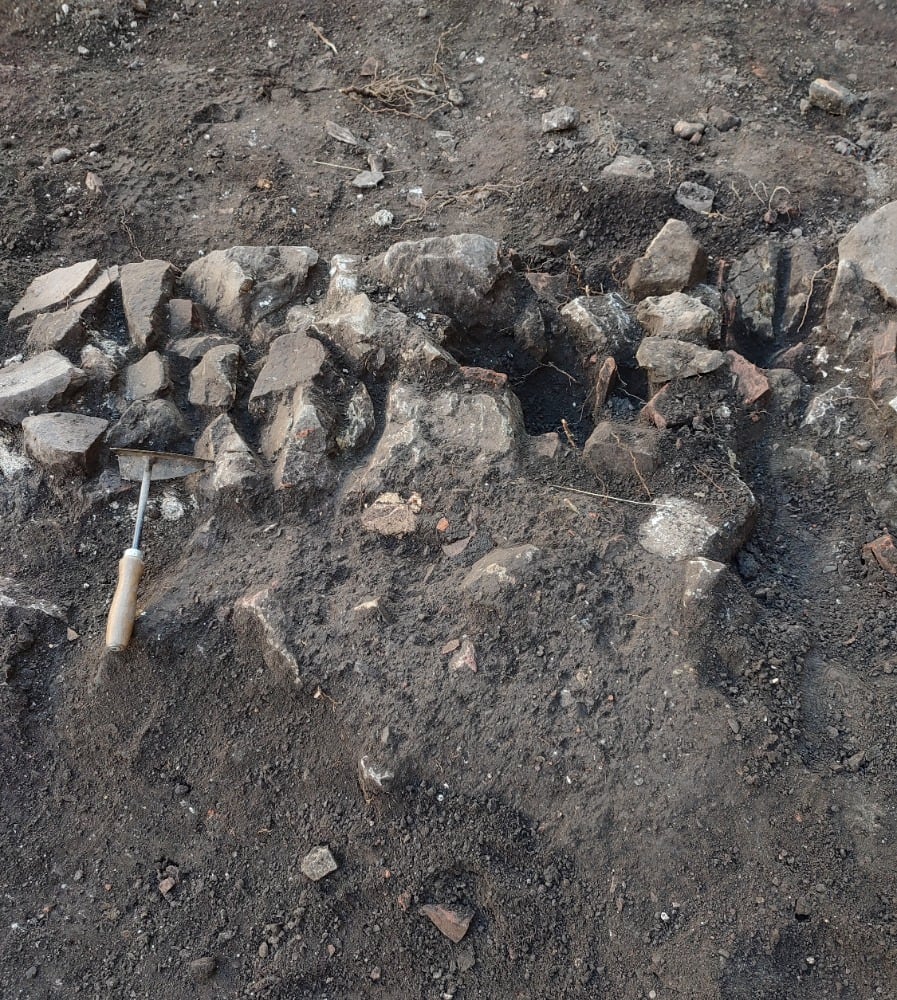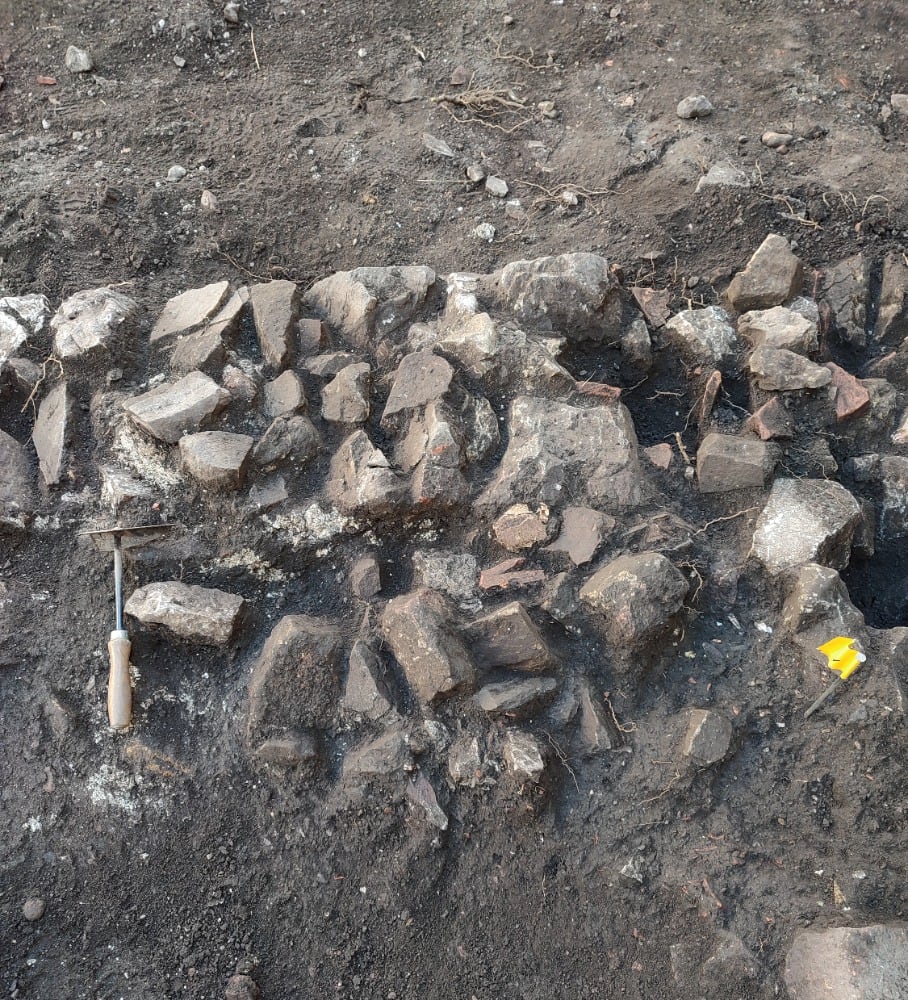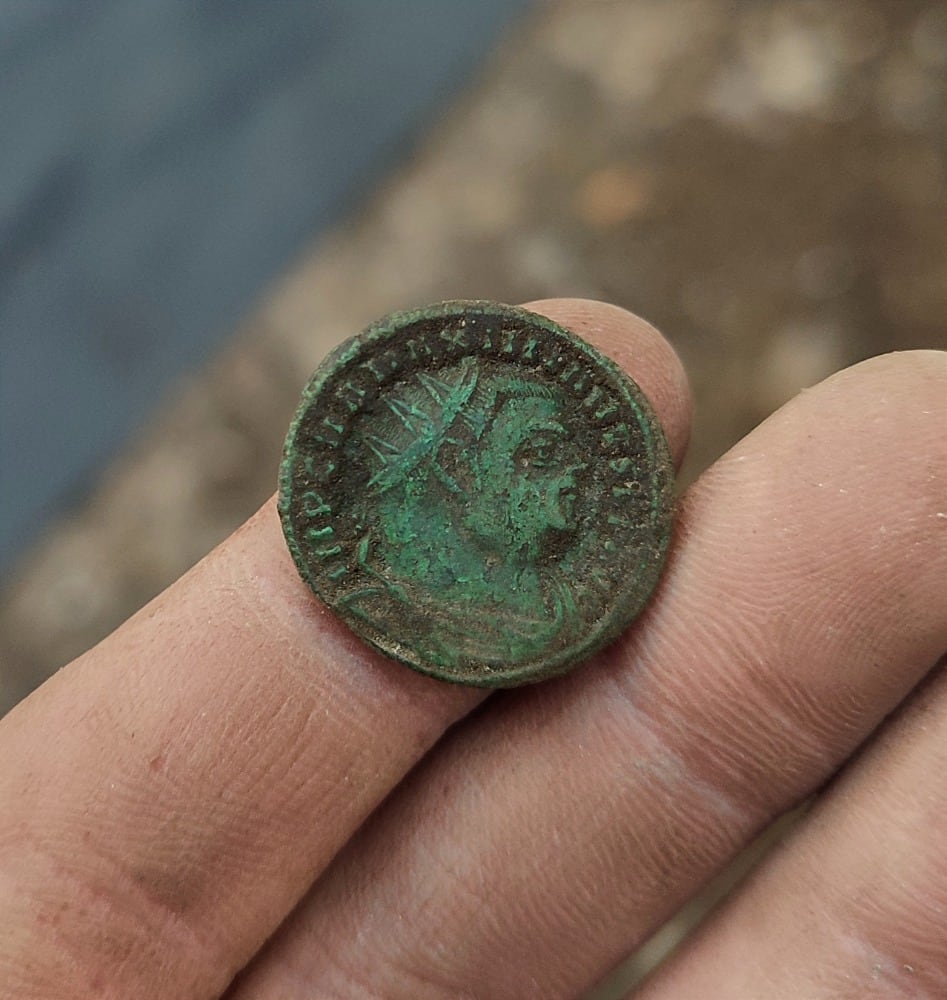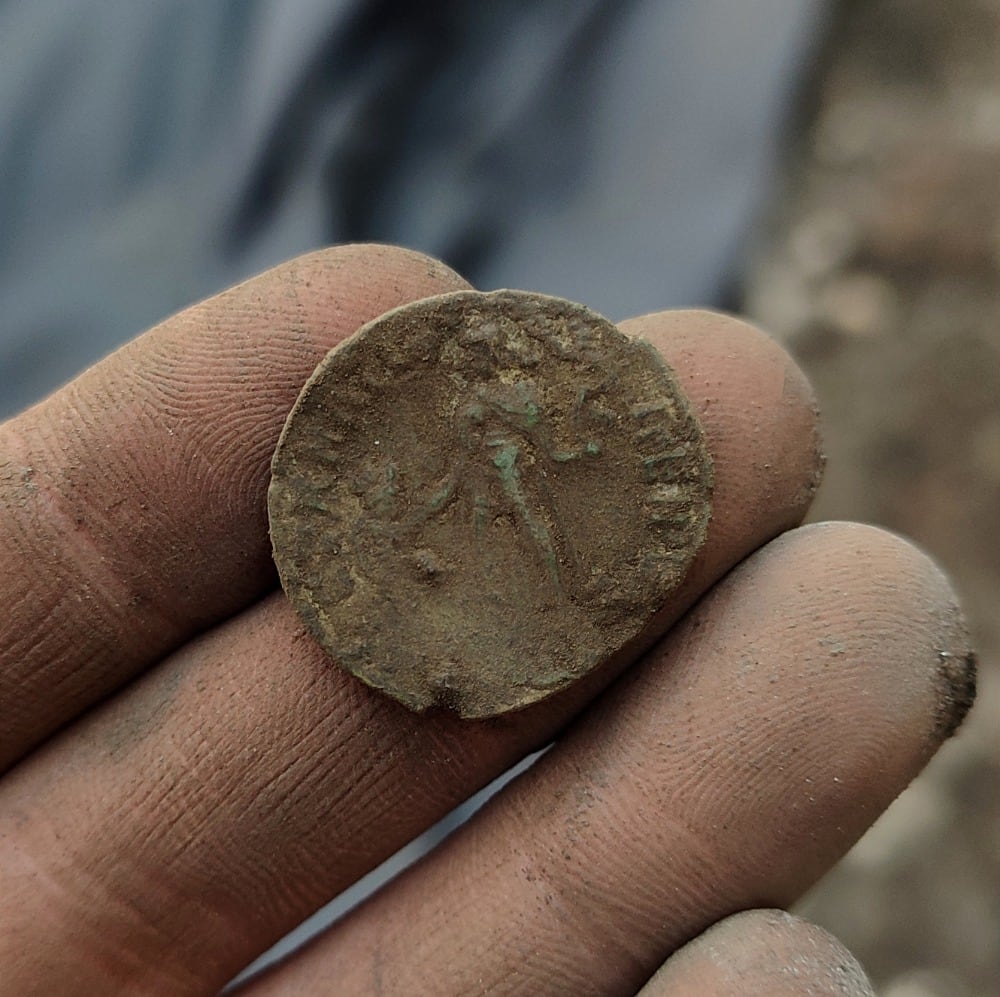To je krásy... některé ale půjdou určit až po umytí  To první je ale poreformní bronzový follis Maximiana s největší pravdobodobností z mincovny Alexandria. Na reversu s legendou CONCORDIA MILITVM. RIC 46B. A je v pěkném stavu
To první je ale poreformní bronzový follis Maximiana s největší pravdobodobností z mincovny Alexandria. Na reversu s legendou CONCORDIA MILITVM. RIC 46B. A je v pěkném stavu  Ale jinak tiše závidím ten studijní pobyt, zároveň přeju a pořád vzpomínam na ty svoje
Ale jinak tiše závidím ten studijní pobyt, zároveň přeju a pořád vzpomínam na ty svoje 
Study placement in Slovenia - research on the Roman city of Emona
Categories: Nálezy nejenom s detektorem v západní Evropě

The research takes place in the former northern part of the city, near the National Theatre inIgrisská Street, where the foundations of an insula, the equivalent of today's apartment buildings, are being uncovered. These buildings were not built to a high standard and their construction was prone to fires. Because of these dangers, apartments on the upper floors were cheap and in low demand, and therefore more sought after by the lower to middle class. (Insula)
Research and findings
This is a destructive full-body excavation in which we remove individual layers and clean up the found structures, which are then targeted with a total station. With its help we then target the finds with a metal detector (Which the staff of the Institute of Monuments call: "Machine for the coins". But it's just Tesoro DeLeon...). Mainly coins but also other metal objects such as lead or bronze ingots and pieces of bronze objects. Iron artefacts are, with a few exceptions, not accurately targeted as they are relatively numerous, not in good condition, and generally only parts of nails. For these we are content with locating them to the quadrant. It is similar with ceramic sherds, which we collect in a bag within a quadrant.
For detector finds, and especially coins, we are interested in the location of the artifact within the ground itself, in addition to its location. That is, whether it lies horizontally or obliquely, and whether it lies face up or face down. The information and orientation of the coin is not always preserved, but this is not so important for research. It is rather supplementary information. The actual GPS location is important.
History of the town
Emona, Roman city located in Ljubljana, on the left bank of the Ljubljanica River, in the passage between the Grajski and Rožnik hills. The Amber Road between the eastern Baltic and Aquileia along the Adriatic coast passed through the city. With an area of 23 hectares and a ground plan of 540x430m, it accommodated up to 6,000 inhabitants. According to older theories, based on historical sources and the actual shape of the town, it was built from an older military camp. But new archaeological findings suggest that the camp stood on the other side of the river below the hill, and Emona was founded later, independently of it.
Its origins date back to between 14 and 15 AD. During the 2nd century it suffered from the Marcomannic wars and plague, and in 238 AD it was burned and abandoned by the townspeople to prevent the army of the emperor and usurper Maximinus of Thrace (235-238 AD) from settling there. In 314 it was hit by civil war, in 401 it was besieged by the Visigoths led by Alaric, and in 452 the city was sacked and destroyed by the Huns. Emona was impoverished but continued to exist. It disappeared in the turbulent times of the Migration of Peoples during the 6th century.

Road in red, foundations in blue
Research location

Destruction prior to cleaning

Destruction after clearance


Antoninian, Maximianus, 286-305 AD.

Follis of Constantine I.


Follis Constantius, mid-4th century AD.


Follis, probably Valentinianus


Follis, some Constantine, 4th century AD.
Blind man of two coins

Coins in situ

Possible part of a fibula

Roman glass

Weights from a surveyor's tool of Groma
The article is included in categories:
- Archive of articles > Archaeology > Finds and rescue research abroad > Nálezy nejenom s detektorem v západní Evropě
Post
Macamica: na studijní pobyt se dá jet i v pokročilejším věku :)
Krasna staz, je tam mnoho zajimaveho... i kdyz mne to tahne spis k tem mincim.
Kolegyne Maca nesklamala, je videt ze umi. 
Ja jen doplnim druhou minci, ta je Gratian AE3, GLORIA ROMANORVM, Siscia (RIC IX Siscia 14c, type? (Constantin I. tento revers nikdy nerazil).
A treti minci: Je to AE2(maiorina) s reversem REPARATIO REIPVB a v Arles ji razili Gratian, Valentinianus II., Theodosius I. a jeste Magnus Maximus, v 378-388.









